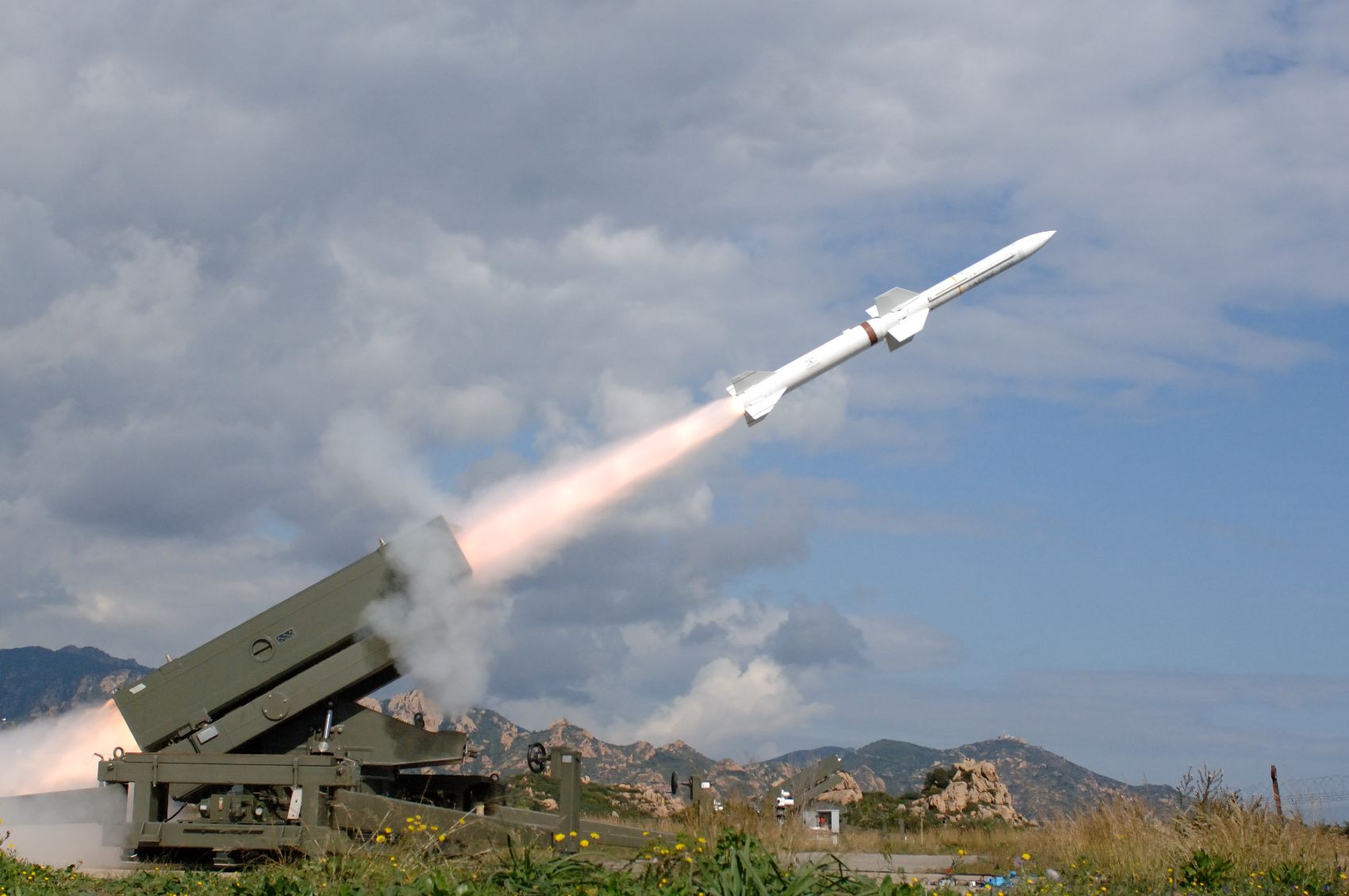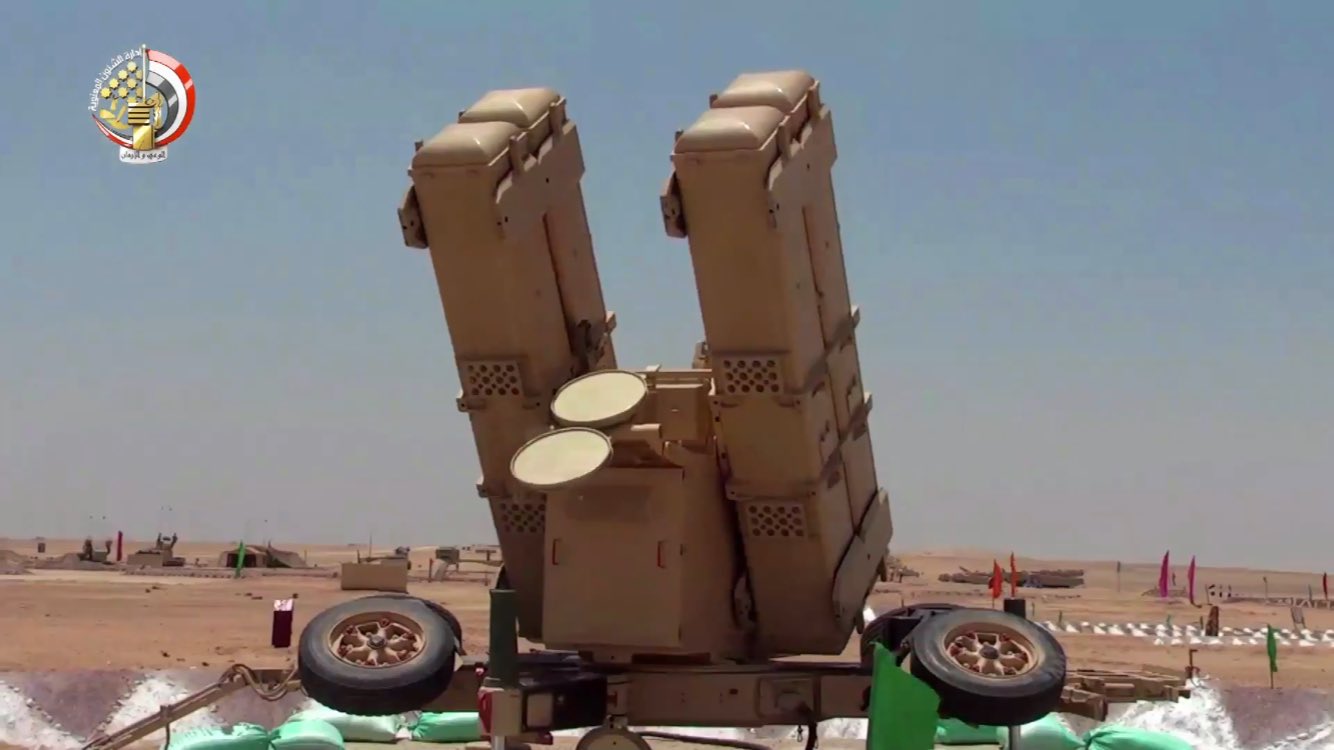In what could be a severe blow to the Armed Forces of Ukraine (AFU), a video recently surfaced online showing the potential destruction of an Italian-origin Skyguard control station.
The control station is also linked to a ground-based air defense (GBAD) system that uses the Aspide surface-to-air missile. The Skyguard/Aspide system may have been the only one Ukraine has ever received.
In a tweet, ‘Ukraine Weapons Tracker’ said, “A Ukrainian battery control post of the Skyguard Aspide air-defense system was destroyed by a Russian Lancet loitering munition near Muzykivka, #Kherson Oblast. This system was originally transferred by Italy and not by Spain as was widely claimed earlier today.”
The account, which has been actively tracing weapon systems in Ukraine, further added that the group identified the SAM system as ex-Italian “since we were looking for the launcher type, which they could not trace in use by the Spanish army.”
It was on November 2 that Spain announced an aid package for Ukraine that included a battery of the Aspide anti-aircraft missile system; the first shipment reportedly arrived later that month. There has since been no news about the delivery of another Aspide air defense system.
In February this year, Italian Prime Minister Giorgia Meloni announced in a joint press conference with Ukrainian President Volodymyr Zelensky that her country would provide Kyiv with Spada and Skyguard air defense systems beyond the SAMP-T/Mamba, which it earlier pledged to deliver.
However, little information is available on the number of SkyGuard or Aspide air defense systems delivered to Kyiv. All we know is that their deployment has rarely been noted. According to publicly available information, only a few Aspide missile firing systems have been offered to Ukraine by Spain and Italy since October last year.
For those who wonder – the SAM system was IDed as ex-Italian as we were going by the launcher variant, which we didn't manage to find in service with the Spanish army.
If you are familiar with the subject and we are wrong, we are glad to be corrected. pic.twitter.com/fWMqAisTbK
— 🇺🇦 Ukraine Weapons Tracker (@UAWeapons) July 23, 2023
The video showing the strike on a Skyguard control station also underscores the ongoing threat that Russian loitering munitions pose to Ukrainian GBADs.
Despite having some cutting-edge GBADs like NASAMS, IRIS-T, SAMP/T, and Patriots operational in the country, the AFU has been pleading for more of these systems to protect against the continuing Russian missile and drone onslaught.

From the video that has gone viral, military watchers judged the Russian loitering munition to be a Lancet which could be recognized by its characteristic cruciform wing design. A video taken from another spotter drone shows the various components of the system set up in what appears to be a large and open field.
As seen in the video above, the drone first spots a group of soldiers strolling along a walkway alongside the field before locating the control station, which is situated in another area of the field, first from a distance and then directly from above.
The loitering munition’s direct strike on its target, which appeared to split into pieces on impact, is shown in a video taken from another drone capturing the action from above.
Russia has extensively deployed Lancet loitering munitions that have been frequently seen going after Ukrainian radars and SAMs deployed along the frontlines. In the recent instance, the choice of target by the Russian loitering munition is significant as battery control stations are essential parts of surface-to-air missile systems.
What Do We Know About The Skyguard?
Swiss Oerlikon Contraves Defense, subsequently known as Rheinmetall Air Defense AG, started building a system to replace the Contraves Super Fledermaus system in the Swiss Air Force in the 1960s. This is when Skyguard first gained notoriety.
The Skyguard 3 version of the system is a fire control station that links a combination of up to four effectors. They include missile launchers, the Oerlikon Twin Gun GDF007, and the Oerlikon Revolver Gun Mk2.
It is designed to protect stationary high-value assets like airfields, bridges, industrial facilities, and military command and control centers. It has two 35mm Oerlikon Twin Gun GDF009 guns.
Its primary goal is to provide effective area and point defense against all air threats, such as cruise missiles and high-speed missiles with small radar cross sections, as well as attacks from medium and low-level aircraft, helicopters, and unmanned aerial vehicles (UAVs) that can fly at any altitude and in any weather. The system is, moreover, highly mobile and simple to deploy and use.
According to the manufacturer, Skyguard combines the accuracy and high rate of fire of the twin cannons, which can fire up to 1,100 rounds per minute, with cutting-edge target detection, tracking sensors, sophisticated fire control, and ballistic computing.
Aspide, on the other hand, is an Italian surface-to-air missile system that was first produced in the 1970s by Selenia, a division of Leonardo that is a member of the MBDA European missile consortium. It has been developed based on the American medium-range air-to-air missile AIM-7E Sparrow.

The missiles can intercept crossing and approaching targets to a range of 25 kilometers, while the range of target recognition and tracking is up to 60 kilometers. Even when crossing very agile targets, the kill probability is very high. Aspide missiles can be fired at up to four targets at once by the system.
The control station for the Skyguard/Aspide system is housed in a single cabin that is attached to a two-axle trailer. It has a tracking radar with a range of about 15 kilometers and a detecting radar that operates in the Z band and has a range of up to 20 kilometers. Inside the station are computers and video equipment.
However, despite their cutting-edge capabilities and other Western air defense systems delivered by NATO countries to Ukraine, they are an easy target for Russia’s suicide drone attacks. Ironically, the systems entrusted by the Ukrainian military to protect against aerial assault are often struck by the same system. Russia frequently dispatches its Lancet and Geran-2 drones for it.
Ukraine, on its part, has also been sending modified kamikaze drones to locate and attack Russia’s sophisticated ground-based air defense systems. As per a lot of visual evidence appearing on social media, Ukrainian UAVs have been able to hit Russian SAMs in recent months.
However, the Lancets deployed by Russia have specifically become a sore point for the Ukrainian military. Yuriy Sak, an adviser to Ukraine’s defense minister, said, “Every day we shoot down at least one or two of these Lancets… but it’s not a 100% interception rate, unfortunately.”
Russian forces now rely heavily on precision weapons like Lancet munitions, which work particularly well against artillery, combat vehicles, and air defense systems. The SkyGuard struck recently was just another casualty in the ongoing war as Russia’s drone attack on Ukraine continues unabated.
- Contact the author at sakshi.tiwari9555 (at) gmail.com
- Follow EurAsian Times on Google News




